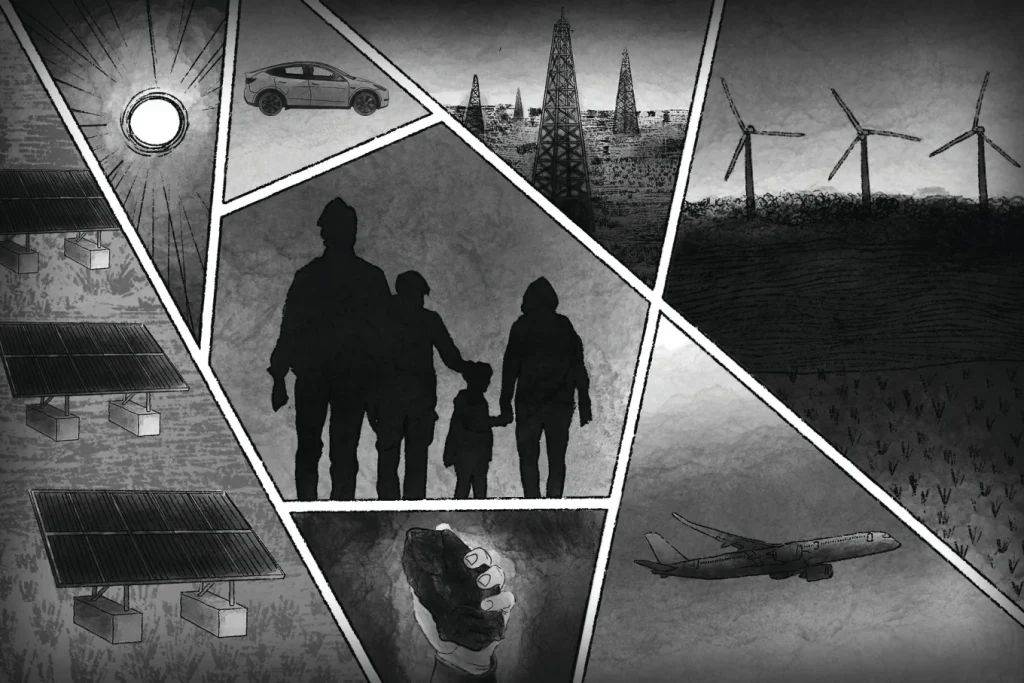The upcoming United Nations climate talks come at a critical juncture in human history. The world is currently grappling with the devastating consequences of climate change, including extreme weather events, rising temperatures, and widespread destruction of natural habitats.
It is imperative that world leaders come together to address this pressing issue and take decisive action to mitigate the impact of human activities on the environment.
For centuries, humans have exploited the Earth’s resources for their own gain, often at the expense of the planet’s delicate ecological balance. T
he quest for economic prosperity and technological advancement has led to the widespread extraction and burning of fossil fuels, resulting in the release of greenhouse gases into the atmosphere.
This relentless pursuit of progress has had far-reaching consequences, altering the Earth’s climate and pushing it towards a state of crisis.
The belief that humans have the power to control nature and harness its resources for their own benefit has driven the relentless exploitation of the environment. This mindset has led to the draining of lakes, the destruction of natural habitats, and the widespread pollution of air and water.
The consequences of these actions are now being felt on a global scale, with communities around the world facing the devastating impacts of climate change.
The urgency of the situation cannot be overstated. The effects of climate change are already being felt, with rising sea levels, extreme weather events, and the loss of biodiversity threatening the very fabric of life on Earth.
It is clear that immediate and concerted action is needed to address this crisis and prevent further damage to the planet.
The upcoming United Nations climate talks provide an opportunity for world leaders to come together and chart a course towards a more sustainable future.
It is crucial that these discussions result in concrete commitments to reduce greenhouse gas emissions, invest in renewable energy sources, and adopt policies that promote environmental conservation and preservation.
Additionally, it is imperative that developed nations take responsibility for their historical contributions to climate change and provide support to developing countries in their efforts to adapt to and mitigate the impacts of a changing climate.
The stakes are high, and the time for action is now. The decisions made at the upcoming climate talks will have far-reaching implications for the future of our planet and the well-being of future generations.
It is incumbent upon world leaders to rise to the challenge and demonstrate the political will and determination to address the climate crisis in a meaningful and impactful way.
In conclusion, the upcoming United Nations climate talks represent a crucial opportunity for world leaders to come together and address the pressing issue of climate change.
The consequences of inaction are dire, and it is imperative that decisive and meaningful action is taken to mitigate the impact of human activities on the environment.
The time for rhetoric and empty promises has passed – now is the time for bold and transformative action to secure a sustainable future for our planet.
Controlling the environment in Mexico City has become a critical issue as the city’s population continues to grow and the impact of climate change becomes more pronounced.
The city’s history, from its origins as a settlement on islands in Lake Texcoco to its current status as a sprawling metropolis of over 22 million people, is a testament to the ways in which humans have sought to manipulate and control their environment.
However, the consequences of these actions are now becoming increasingly apparent, with the depletion of natural resources and the effects of climate change posing significant challenges to the city’s future.
One of the most pressing concerns is the issue of water scarcity. The arid climate of the Valley of Mexico has made water a precious and increasingly scarce resource.
In order to meet the growing demand for water, the city has resorted to pumping from deep underground aquifers. However, this has led to the subsidence of the land, causing infrastructure to crumble and sink at an alarming rate.
The toll of centuries of such pumping has become evident in the form of deteriorating curbs and tilting structures, with some areas sinking as much as 30 centimeters per year.
This subsidence not only poses a threat to the city’s infrastructure but also exacerbates the risk of severe flooding, as drainage systems become less effective due to the sinking land.
Furthermore, the impact of climate change has only served to compound these challenges. Extreme weather events, such as heavy rainfall and flooding, have become more frequent and intense, further straining the city’s ability to manage its water resources and infrastructure.
The combination of subsidence and climate change has created a perfect storm of environmental challenges, threatening the livability and sustainability of Mexico City.
In response to these challenges, it is imperative that the city takes proactive measures to control and manage its environment in a sustainable manner.
This will require a multi-faceted approach that addresses the root causes of these issues, while also seeking to mitigate their impact on the city and its residents.
One possible solution is to invest in alternative water sources, such as rainwater harvesting and wastewater recycling, in order to reduce the reliance on groundwater pumping.
Additionally, efforts to improve the city’s drainage systems and infrastructure resilience will be crucial in mitigating the risks of flooding and subsidence.
In addition to these practical measures, it is also essential to address the underlying causes of environmental degradation, such as unsustainable urban development and over-extraction of natural resources.
This will require a concerted effort to promote sustainable and responsible urban planning and development, as well as the implementation of policies that prioritize the preservation and conservation of natural resources.
Ultimately, the challenges facing Mexico City in controlling its environment are complex and multifaceted, but they are not insurmountable.
By taking proactive and sustainable measures to address the root causes of these issues, the city can work towards creating a more resilient and livable environment for its residents.
It is imperative that the city takes action now to ensure the long-term sustainability of its environment and the well-being of its inhabitants.
Only through a concerted and collaborative effort can Mexico City hope to effectively control its environment and mitigate the impact of climate change.
It is crucial to heed the words of Luis Zambrano, a respected professor of ecology at the National University Autónoma of Mexico, when he emphasizes the impact of human actions on the environment.
The city’s excessive pumping of water from the aquifer is not only depleting a vital natural resource, but it is also causing the city to sink, leading to a myriad of problems.
It is imperative that we recognize the consequences of our actions and take responsibility for the preservation of our natural resources.
As Zambrano aptly points out, nature does not create these enormous problems – it is our own actions that are contributing to our vulnerability.
It is time to reevaluate our approach to resource management and prioritize the sustainability of our environment for the benefit of future generations.
Mexico City serves as a prime illustration of the ways in which individuals and empires have historically manipulated their natural surroundings in pursuit of perceived benefits.
This pattern is not unique to Mexico City, as similar practices have been observed in various regions across the globe.
In many cases, extensive deforestation has occurred to make room for agricultural activities or livestock grazing, while other areas have suffered degradation and contamination as a result of quarrying and mining operations aimed at extracting valuable metals and minerals.
While these activities have undoubtedly contributed to human progress and productivity, they have also exacted a significant toll on the environment, serving as a major driver of emissions and environmental decline.
This serves as a stark reminder of the complex and often destructive relationship between humanity and the natural world, and underscores the urgent need for more sustainable and responsible approaches to resource utilization.
The catastrophic flooding in the mid-16th century prompted the Spanish to embark on ambitious drainage projects in an effort to keep the city dry and prosperous.
This initiative, which spanned three centuries, was intended to benefit the capital-owning elites and the city of colonial Mexico, as well as the home country. However, the rural populations, who contributed the most through coerced labor, did not reap the same benefits.
The extraction of resources and labor from the countryside to benefit the city and the home country was not equitable, and it left the rural populations at a disadvantage.
Jan Golinski, a professor of history at the University of New Hampshire, noted that the Europeans of the time believed their engineering efforts, such as cutting down forests and draining swamps, would not only change the landscape but also the climate, making it more similar to their homelands.
They viewed these changes as a sign of progress and civilization, as they believed they were gaining greater control over nature and civilizing their environment.
Meanwhile, the role of coal in the global economy has remained prominent. In China and Japan, the increasing consumption of coal was seen as a sign of economic development as early as the 20th century.
The Chinese government, following the Communist Revolution in 1949, used coal production as a key measure of growth, alongside other essential items such as cloth, electricity, and steel.
Similarly, Japan looked to Western mining practices to develop its own coal fields within its home islands and empire. Today, China stands as the world’s largest greenhouse gas emitter, while historically the United States has held that title.
In India, which was under British rule until gaining independence in 1947, coal played a crucial role in furthering the country’s development and gaining support from the population.
The Indian government established state-owned coal-fired plants and began electrifying cities and larger farms, with rural areas not coming online until the early 21st century.
Despite understanding the environmental risks associated with coal, the country continued to rely on it due to limited resources.

In the United States, environmental concerns gained momentum in the 1960s and ‘70s, leading to the creation of the U.S. Environmental Protection Agency and the Endangered Species Act.
However, addressing the use of fossil fuels, which is at the core of the global economy, proved to be a more challenging task.
There was reluctance to discuss adapting to climate change and a lack of willingness to join international climate agreements. Despite the gloom surrounding climate and environmental issues, historians believe that radical shifts away from traditional ideas of progress can lead to a better future.
By rethinking the necessity of constant growth, societies can operate within the limitations of finite resources and environmental boundaries, ensuring the fulfillment of basic social needs and entitlements.
